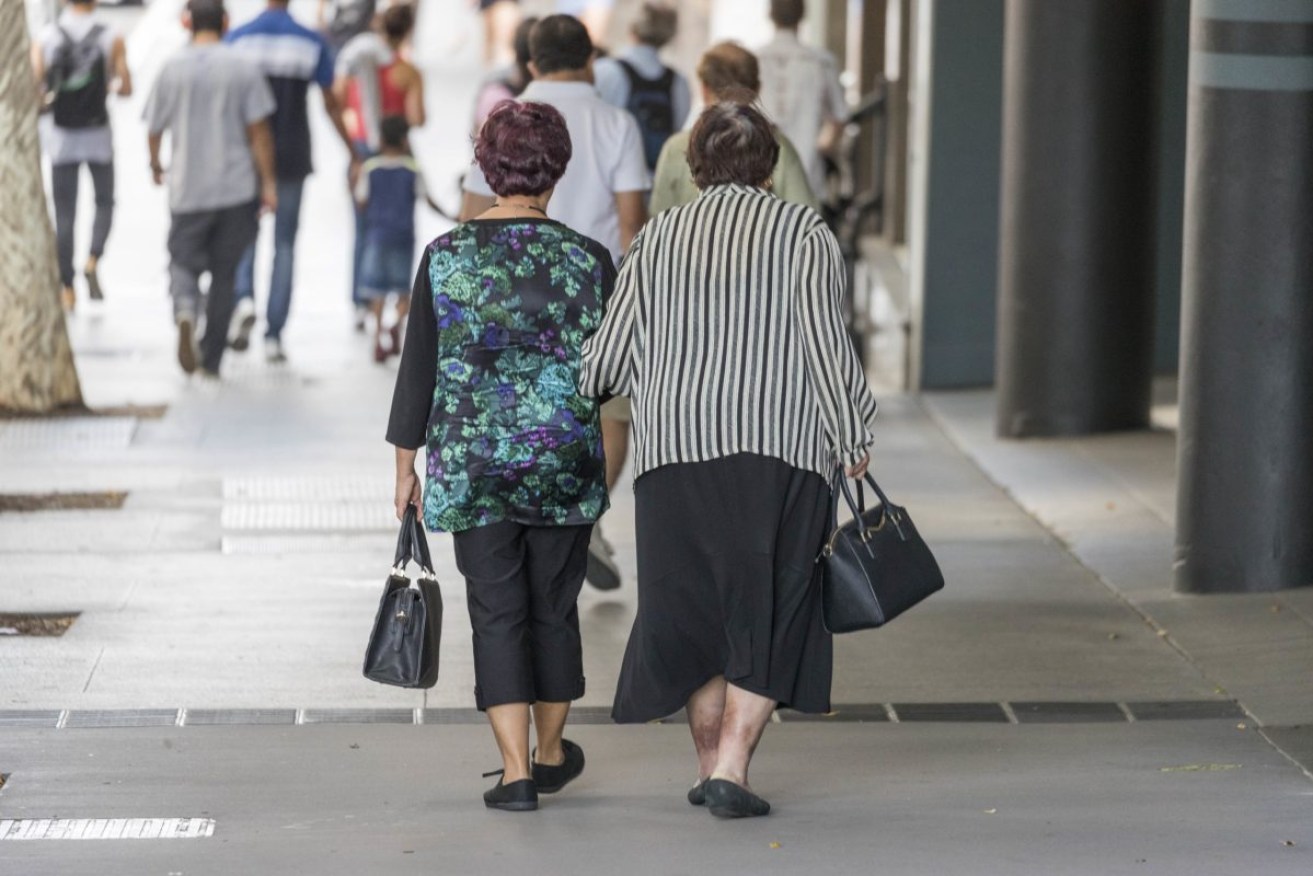Older Australians being locked out by digital divide
As the pandemic accelerates the move toward online services and mobile technology, older Australians are increasingly left behind, writes Jane Mussared.

Photo: AAP/Glenn Hunt
The COVID-19 pandemic has forced thousands of older South Australians to increase their use of technology; if not by choice, through necessity.
Smart phones that might previously have been used by older people only for calls and text messages are now being used to scan QR codes to check-in and make FaceTime and video calls to stay connected with loved ones.
While for many this has accelerated their learning, for others it has done the opposite – it has pushed them further into disconnect and isolation because they don’t use technology which is fast becoming essential.
We speak to many older people who have embraced new platforms and apps and made the most of the connectivity and convenience it brings.
But for an equal number of older South Australians, the digital world continues to be a language in which it is impossible to get any kind of fluency. The result is a mounting isolation and a sense of being on the outside.
The causes are many and varied including not being able to afford it, not knowing how to use it, not having anyone to coach its use and simply not keeping up with the rapid changes of it.
Today is International Day of Older Persons and the global theme designated by the United Nations is ‘digital equity for all ages’. While progress is being made, it’s equitable access continues to be out of reach for many older people.
Thousands of older people continue to find themselves on the wrong side of the digital divide. And the gap is not just between those who use a computer and those who do not, but also between those who are able to keep up with the rapid changes and those who can’t.
Being on the wrong side of the digital divide impacts quality of life, access to important information, and finding out about opportunities to get involved in the community. We hear from older people, including in our rural areas, that the voluntary roles many have taken on feel increasingly stressful, frustrating, and out of reach because complying with government regulation, undertaking key functions, and keeping up with communication are increasingly difficult.
For most of their lives, older people have had real human interaction when accessing services. Replacing this with impersonal online systems packs a triple punch for many older South Australians.
Being on the wrong side of the digital divide impacts quality of life, access to important information, and finding out about opportunities to get involved in the community
Firstly, it takes away connections with community at a time when more older people than ever live alone with fewer opportunities for social contact as part of daily routines.
Secondly, it is often a struggle to get information and access to both services and social and engagement opportunities because the emphasis is online sources.
Thirdly, older people tell us they are often met with impatience and even derision if they can’t master technology. This can have a huge impact on their self-worth, make them feel excluded and reluctant to keep trying.
The answer is to continue an emphasis on hybrid systems of information and on continuing opportunities for people to learn and keep up with digital applications. But, in common with other low-income groups, the cost of both updated technology, data access and maintenance will also be prohibitive for increasing numbers of older people.
And, while the NBN assures us that their roll out has provided almost universal access to the internet, many older people in rural areas continue to report blackspots and unreliable connections. For others, staying up to date with rapid changes and getting help to keep learning is proving very difficult.
COTA SA urges funding to run programs that help older people use and understand the online world – through classes, seminars, and one-on-one coaching and support. Local libraries are important sources of support but many people lack confidence to ask for help or simply do not know where to start.
Older people tell us they are often met with impatience and even derision if they can’t master technology. This can have a huge impact on their self-worth, make them feel excluded and reluctant to keep trying
COTA SA continues to appeal to the Federal and State Governments to maintain offline options to interact with government services.
The private sector must also be inclusive of older people. There are examples of digital exclusion all around us including to negotiate everyday life.
The loss of local newspapers, the absence of check-out operators in supermarkets, the struggle to find transport timetables and information, the exodus of local bank branches, the lack of a contact name and number to pursue inquiries – all of these are examples of systems that make life in an offline world harder and harder to navigate.
Digital equity requires proactive attention to closing the digital divide – for older people and for others. It means ensuring non-online systems are maintained and it means structuring support on an ongoing basis to help people learn and then stay up to date despite not being part of a school or a workforce.
It also means paying attention to the prohibitive costs and dodgy connections that undermine equitable access.
Jane Mussared is chief executive of COTA SA




